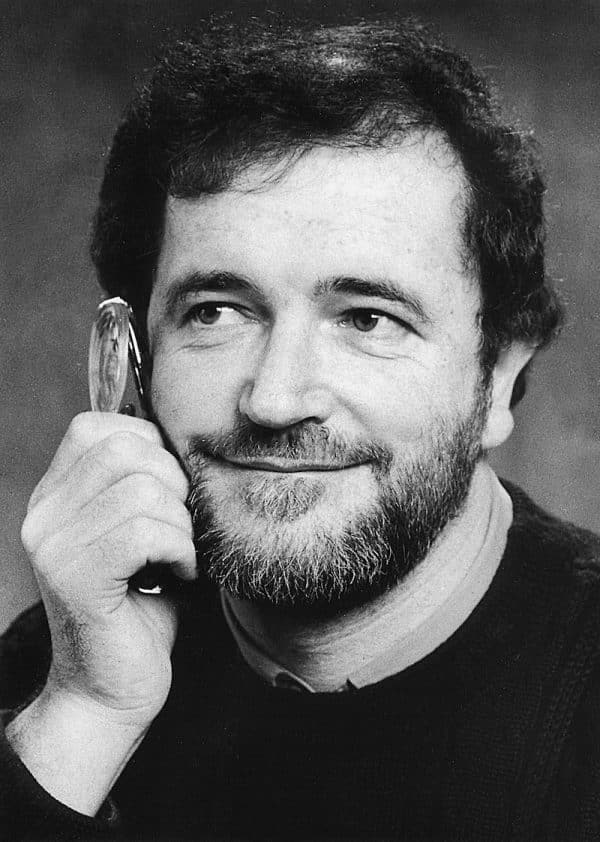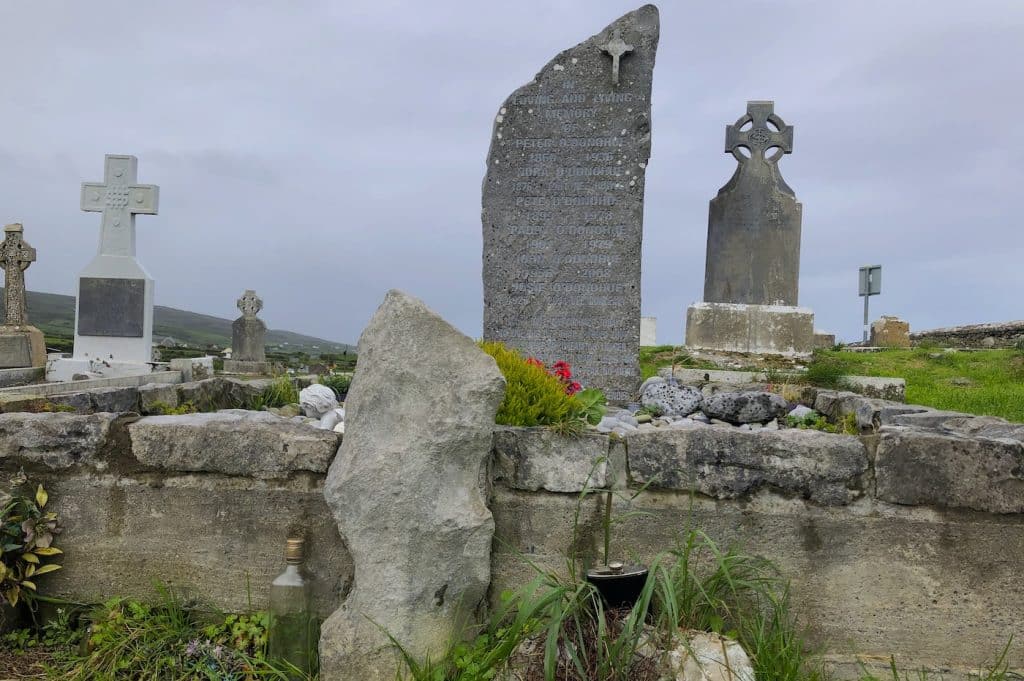This story / page is available in:
![]() German
German
“The great mistake of many people, even religious people, is the idea,
that those whom death has taken leave us.
They do not leave us. They stay! Where are they? In the darkness?
Oh, no. We are in the darkness. We don’t see them, but they see us.”
Karl Rahner, German theologian (1904 – 1984)
Part One of the Ireland News series on John O’Donohue
- Click here for the overview: All articles about the life and work of John O’Donohue.
- Click here for the book list: The books of John O’Donohue.
In the first days of the new year I often think of a person who taught me a lot about life, the soul, spirituality and nature. I never met him, I read his books. On 1 January 2021, John O’Donohue would have turned 65. Had he not died 13 years ago, on 3 or 4 January 2008 at the age of 52, completely unexpectedly. I would have liked to have known him.
John O’Donohue, an Irishman from County Clare, was a priest and writer, philosopher and poet, environmental activist, life teacher, speaker and humanist. With Anam Cara (published and available in German by dtv), Eternal Echoes and Divine Beauty he wrote world bestsellers. Born the first of four children to a housewife and a farmer and stonemason in the rocky Burren Valley of Caherbeanna, John remained deeply rooted in the barren landscape of the Irish West throughout his life. Virtuoso in language and content as no other, he described these soulscapes on the Atlantic seaboard, the natural world and the existence of man in it.
O’Donohue loved the human condition in all its facets. His great topic was to live life to the fullest without fear. He considered unlived life to be the maximum transgression of being human. John was a courageous man who stood up for his convictions, who lived life deeply and who did not hide, indeed, who showed himself where he was different from what social constraints and traditional clichés would have demanded.
In books and lectures, John called on readers and audiences to live the life that you want and love with courage. It was important not only to dream one’s dreams but also to realise them and thus find one’s destiny – free of fear and from the heart.
John O’Donohue might therefore have smiled mildly at the way he is preferred to be described today and the image that even people who were once close to him paint of him in public. At times it borders on saint worship. Above all, however, this carefully produced image of the lonely and reclusive spiritual hermit and philosopher-writer hides important sides of his fascinating authentic personality. All too little is known about the man, his life and death.
A little over two years ago, I set off in search of John O’Donohue. It all started by chance in November 2018 at John’s grave in Craggagh Cemetery in Fanore, County Clare. I would like to share some of the results of this search in the coming months here on Ireland News.
In this place, in the first version of this post, there were some quotes from John O’Donohue’s official website (as of 2.1.2021) for documentation purposes. By email dated 21 January 2021, the Director of John O’Donohue’s Literary Estate, Ann Cahill, (address unknown), among other requests, asked me to “delete this copyright-protected material immediately”. I am complying with this request, although quoting relevant passages of text in a new creative context is accepted and common journalistic and scholarly practice. The paragraphs about John´s Vita can be read directly on the website www.johnodonohue.com.
Instead, a brief introduction to John’s life, with quotes from the English Wikipedia entry under his name:
“John O’Donohue (1 January 1956 – 4 January 2008) was an Irish poet, author, priest and Hegelian philosopher. He was a native Irish speaker and is best known as an author for popularising Celtic spirituality. . .
O’Donohue became a novice at the age of 18 in Maynooth, in the northern county of Kildare … He was ordained a Catholic priest on 6 June 1979. O’Donohue moved to Tübingen, Germany, in 1986 and completed his dissertation on the German philosopher Georg Wilhelm Friedrich Hegel for his doctorate in philosophical theology at the University of Tübingen in 1990. In 1990 he returned to Ireland to continue his priestly ministry….
O’Donohue’s first published work, Anam Cara (1997), which means “soul friend” in Irish, catapulted him into a more public life as an author, speaker and teacher, especially in the United States. O’Donohue left the priesthood in 2000….
Just two days after his 52nd birthday and two months after the publication of his last complete work, Benedictus: A Book of Blessings, O’Donohue died suddenly in his sleep on 4 January 2008 while on holiday near Avignon, France. The exact cause of death was not disclosed by his family. He is survived by his partner Kristine Fleck, his mother Josephine (Josie) O’Donohue, his brothers Patrick (Pat) and Peter (PJ) O’Donohue and his sister Mary O’Donohue . .
O’Donohue’s last will and testament was declared invalid by the High Court in December 2011. The will left nothing to his partner Kristine Fleck. In the absence of a valid will, his estate fell to his mother Josie O’Donohue.”
So much for the introduction to John’s life.
Future articles will deal with these questions:
:: Why and when did John O’Donohue give up the priesthood?
:: What conflicts did John have with the Bishop of Galway?
:: Why are the circumstances of John O’Donohue’s death in the southern French department of Vaucluse kept secret to this day?
:: What were John’s and his partner’s plans for the future at the turn of 2007/2008?
:: What happened to John O’Donohue’s retreat, the lonely cottage in Connemara?
:: How did John’s German partner fare after John’s tragic death?
* * * * *
You can support our work with a donation
Photo credits: Markus Bäuchle; dtv (1), private (1)
This story / page is available in:
![]() German
German







Leave A Comment